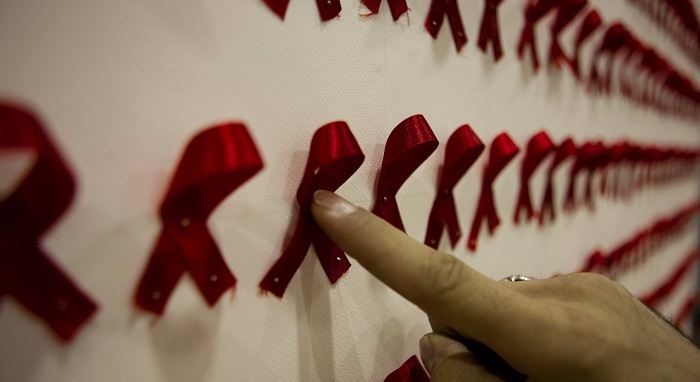But scientists in the US have shown it is possible to use state-of-the-art genetic editing technology to literally cut away the virus from the DNA of cells.
“This is a technology which enables you to change the genes. Effectively you can engineer the body to cure itself from the inside.”
Although the experiments have so far only been carried out in a lab, researchers at Lewis Katz School of Medicine at Temple University, are confident that within three years they will be able to start trials on humans.
British experts said it the treatment would effectively ‘engineer the body to cure itself from the inside’ while charities said the breakthrough was `very exciting.`
Crucially the human immune cells which were tested in the lab showed no alteration to any other parts of the genetic code. There have been fears that altering DNA could trigger a cascade of genetic breaks which would prove harmful or even lethal to humans.
“The fact that for the first time we have been able to completely eliminate segments of the viral genome in the laboratory demonstrates that we should be able to eliminate it in the human body,” said lead researcher Professor Kamel Khalili.
"The findings are important on multiple levels. They demonstrate the effectiveness of our gene editing system in eliminating HIV from the DNA of immune cells and permanently inactivating its replication.
“Further, they show that the system can protect cells from reinfection and that the technology is safe for the cells, with no toxic effects.
“It has huge potential. Based on the findings we should be entering into clinical trials within three years.”
There are more than 100,000 people living with HIV in Britain and around 600 die each year.
Antiretroviral drugs are now very good at controlling infection but patients need to be on medication for life and if they stop taking treatment the virus replicates rapidly, eventually causing acquired immune deficiency syndrome, or AIDS.
The new technique - called Crispr/Cas9 - involves targeting the genetic code of HIV which inserts itself into cells.
Scientists take a protein called Cas9 and modify it so it can recognise viral code.
Blood is then extracted from the patient and the Cas9 protein added where it seeks out the HIV DNA in immune cells. Once it finds it, it releases an enzyme which removes the sequence, effectively snipping out the virus. The healthy modified cells would the be transfused back into the patient.
Scientists believe that replacing just 20 per cent of immune cells with the genetically altered cells would be enough to cure the disease.
Prof Khalili said it may also be possible to give the protein at the same time as HIV drugs until there were no longer needed.
" It makes sense to incorporate this treatment along with the current antiviral treatment for some period of time with anticipation that upon cessation of the antiviral therapy there will be no rebound due to the eradication of the virus by the excision strategy," he said.
After the viral sequence has been removed from the DNA, the loose ends of the genome are reunited by the cell`s own repair machinery. The cleared cells are then pumped back into the patient.
“It is an important step forward. This is part of a wave of research that is being done using these new techniques to attack HIV in particular but also a number of other diseases,” Professor Matthew Cobb, of Manchester University told Radio 4’s Today programme.
“This is a technology which enables you to change the genes. Effectively you can engineer the body to cure itself from the inside.”
Shaun Griffin, Executive Director of External Affairs at Terrence Higgins Trust, added: “This is a really exciting lab study that shows HIV can be eliminated from the DNA of human immune system cells.
"We hope that further research will be able to show a reduction in the amount of virus in people living with HIV, as it has in the test tube.”
The research was published in the Nature journal, Scientific Reports.
More about:
















































